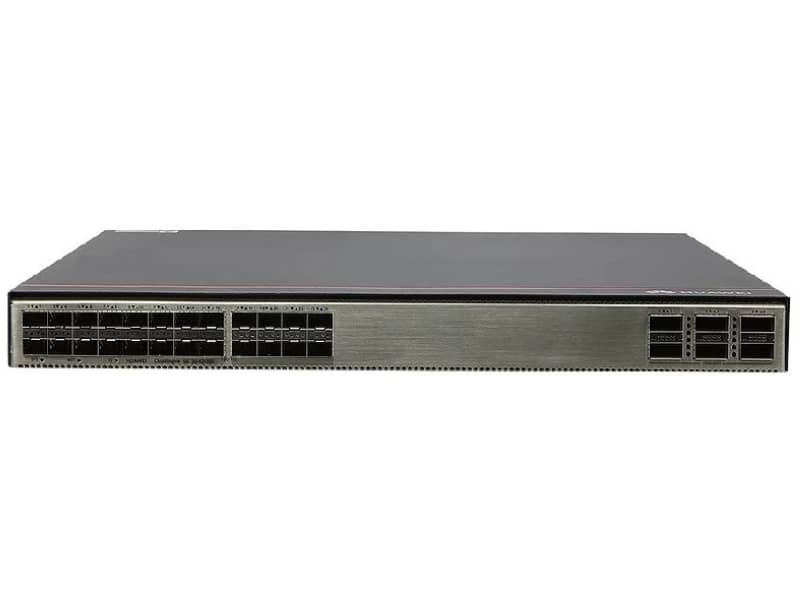Descripción
El Huawei CloudEngine S6730-H24X6C es un switch de alto rendimiento diseñado para redes de campus, centros de datos y entornos empresariales que exigen velocidad, capacidad de conmutación avanzada y escalabilidad.
Este modelo forma parte de la serie CloudEngine S6730-H, conocida por su potencia y flexibilidad. Ofrece 24 puertos 10GE (SFP+) y 6 uplinks 40GE (QSFP+), permitiendo conexiones de gran ancho de banda tanto para servidores como para enlaces troncales (backbone). Su capacidad de switching alcanza los 2.4 Tbps, garantizando un rendimiento sobresaliente en escenarios de tráfico intenso.
Además, el Huawei CloudEngine S6730-H24X6C integra soporte completo para funciones L2 y L3, incluyendo OSPF, BGP, IS-IS, VRRP y más. Esto permite una implementación robusta de políticas de enrutamiento, ideal para arquitecturas modernas de red.
El switch también es compatible con las últimas tecnologías de automatización y virtualización, incluyendo VXLAN, EVPN, y telemetría en tiempo real, lo que lo hace ideal para infraestructuras definidas por software (SDN).
Entre sus características destacan:
-
QoS avanzado con priorización de tráfico
-
Gestión centralizada mediante Huawei iMaster NCE
-
Seguridad mejorada con ACLs, MACsec y autenticación 802.1X
-
Diseño sin ventilador opcional (según configuración)
-
Soporte para stacking inteligente (iStack)
En conclusión, el Huawei CloudEngine S6730-H24X6C es una solución potente y de alto nivel para empresas que buscan escalabilidad, confiabilidad y una infraestructura de red preparada para el futuro.
| Switching Capacity2 | 1.68/2.4 Tbit/s |
| Fixed Ports | 24 x 10 GE SFP+, 6 x 40/100 GE QSFP28 |
| Wireless Services | Management of up to 1024 APs
AP access control, AP domain management, and AP configuration template management Radio channel management, unified static configuration, and dynamic centralized management WLAN basic services, QoS, security, and user management CAPWAP, tag/terminal location, and spectrum analysis |
| iPCA | Collection of real-time statistics on the number of lost packets and packet loss ratio at network and device levels |
| Super Virtual Fabric (SVF) | Functions as the parent node to virtualize downstream switches and APs vertically as one device for simpler management
Supports a two-layer client architecture Supports third-party devices between SVF parent and clients |
| VXLAN | VXLAN L2 and L3 gateways
Centralized and distributed gateways BGP-EVPN Configured through the NETCONF protocol |
| Interoperability | VBST (compatible with PVST, PVST+, and RPVST)
LNP (similar to DTP) VCMP (similar to VTP) |













